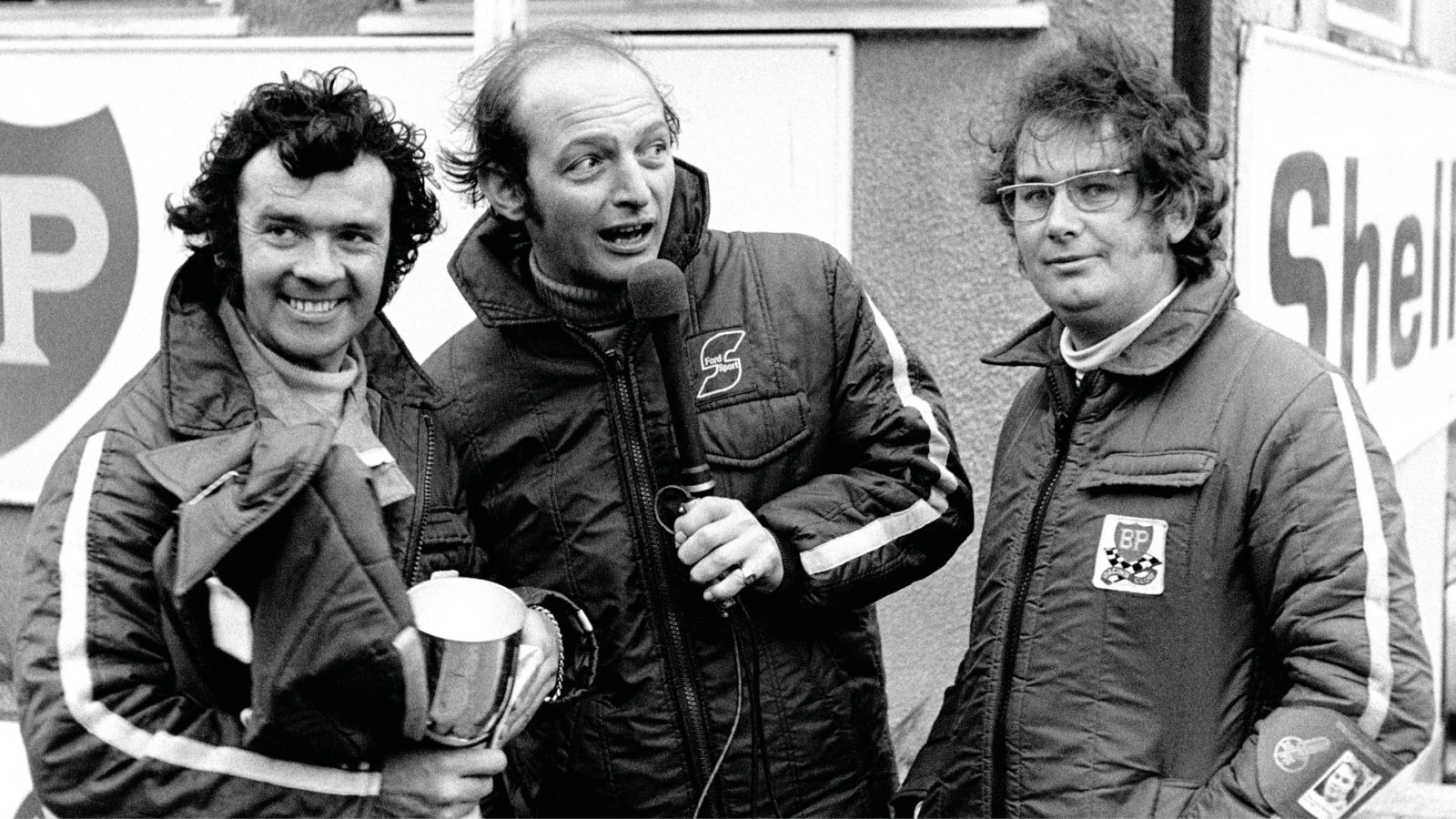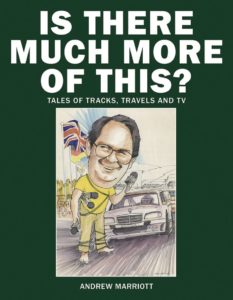Is there much more of this? book review
The memoirs of motoring writer and racing commentator Andrew Marriott reveal that, just possibly, journalism used to be more fun

Andrew Marriott, right, away from the desk with Cyd Williams, left, and Nick Brittan at Brands Hatch, 1972
Alamy
First, a declaration. It was Andrew Marriott who got me started in the writing racket almost 60 years ago by recruiting me as a freelancer at Motoring News. We shared flats in London, he got me out of numerous self-inflicted scrapes and we’ve been friends ever since. There were longish periods when we didn’t see much of each other, and this book records plenty of the extraordinary events that filled those gaps.
It’s also a sort-of autobiography, consisting largely of columns published over several years in the BRDC Bulletin. In his affable postcard-to-home prose, Marriott recounts the privileges and pain of a life spent – much of it on TV – sharing, reporting and even enhancing (not exclusively when silver was dangled) the performances of the giants of our sport, from an immense variety of disciplines.
Some of those episodes defy credibility. In China our narrator helped to coach a quartet of local driving instructors – none of whom had officially driven faster than 30mph – into rally drivers. Competing on a rally in Paraguay, he was relieved to have retired when the local hero got stuck in a hole and persuaded the time-keeper to clock him in as a finisher (and the winner) by shooting him in the leg.
Several of Marriott’s claims are surely unarguable. He’s the youngest person (at 18), he thinks, to have had his report of an F1 race published (it was at Mallory Park, honest!) and is certainly the oldest regular at Le Mans, where he still stalks the pitlane with a microphone as he approaches 80. A tiresomely prim modern audience would be horrified to learn that for most of his professional life he has artfully combined dispassionate journalism and commentating with 30 rewarding years in driver and sponsorship management.
I sometimes speculate how racing drivers, who constantly put their lives on the line, regard us judgemental journalists whose only professional hazard is an editor’s blue pencil. Marriott, though, knows all about life-threatening risk. His career as an occasional (and successful) rally navigator, alongside his great friend Andy Dawson, included several events in a Lancia Stratos, crash protection provided by a flimsy single-skin door. Respect.
At first glance this is a work that would appeal to readers who already have most of their lives behind them. But it’s also a piece of living history, from an age that could never be repeated. Irresistible to motor sport fans of all ages. Mike Doodson

|
Is There Much More Of This? Andrew Marriott Performance Publishing, £29 ISBN 9781739124908 |
December 2022 book reviews in brief
Paddock Transfer Volume 1 1970-74
Tim Beavis & Guy Loveridge
A sequel to the charming Admission 7/6, which showcased the 1960s work of little-known – but immensely enterprising – amateur photographer Edgar Vernon Starr, this is similar in tone (but ever so slightly more recent). Starr never had any form of official accreditation, as far as is known, but possessed a knack for capitalising on the more relaxed security of the era to gain access to the pitlane – even at Formula 1 events. You won’t find the pin-sharp focus of Cahier or Cooper, but many of the pages drip with atmosphere because Starr trained his lens on people and places, as well as cars. Co-authors Tim Beavis and Guy Loveridge provide informative captions that blend period detail with modern context (Beavis acquired Starr’s archive at auction may years ago), but the best news is this: at least three more volumes will follow. SA
Douglas Loveridge Publications, £40
ISBN 9781900113182
Lost in time – Formula 5000 in North America
John Zimmermann
Big engines, big fields, big names – F5000 was a great idea well executed, says Zimmermann whose handsome history of the series and its demise portrays some great racing that rivalled F1 for speed and thrills. After setting the background he discusses the US tracks where it flourished, and then moves to the cars. All the big names tackled this cost-effective stock-block formula – Chevron, Eagle, Lotus, but who knew about ‘the secret Chaparral’? Next he discusses drivers, whether ‘stalwarts’ or ‘occasionals’ – Gethin, Andretti, Donohue, Bell, Amon, Redman. He writes nicely, making the seasonal run through fun to read, while lots of first-hand voices describe the political and financial indecision that saw it dissolve. A fine history of a much-missed series.GC
Racemaker Press, £76
ISBN 9781913089290
